Forgotten Realms is a campaign setting for the Dungeons & Dragons (D&D) fantasy role-playing game. Commonly referred to by players and game designers as "The Realms", it was created by game designer Ed Greenwood around 1967 as a setting for his childhood stories. Several years later, it was published for the D&D game as a series of magazine articles, and the first Realms game products were released in 1987. Role-playing game products have been produced for the setting ever since, in addition to novels, role-playing video game adaptations, comic books, and the film Dungeons & Dragons: Honor Among Thieves.
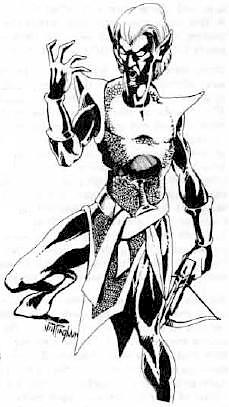
The drow or dark elves are a dark-skinned and white-haired subrace of elves connected to the subterranean Underdark in the Dungeons & Dragons fantasy roleplaying game. The drow have traditionally been portrayed as generally evil and connected to the evil spider goddess Lolth. However, later editions of Dungeons & Dragons have moved away from this portrayal and preassigned alignment. More recent publications have explored drow societies unconnected to Lolth.
Dragonlance is a shared universe created by Laura and Tracy Hickman, and expanded by Tracy Hickman and Margaret Weis under the direction of TSR, Inc. into a series of fantasy novels. The Hickmans conceived Dragonlance while driving in their car on the way to TSR for a job interview. Tracy Hickman met his future writing partner Margaret Weis at TSR, and they gathered a group of associates to play the Dungeons & Dragons role-playing game. The adventures during that game inspired a series of gaming modules, a series of novels, licensed products such as board games, and lead miniature figures.
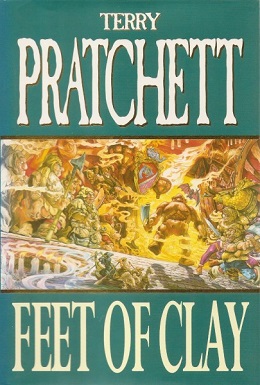
Feet of Clay is a fantasy novel by British writer Terry Pratchett, the nineteenth book in the Discworld series, published in 1996. The story follows the members of the City Watch, as they attempt to solve murders apparently committed by a golem, as well as the unusual poisoning of the Patrician, Lord Vetinari.
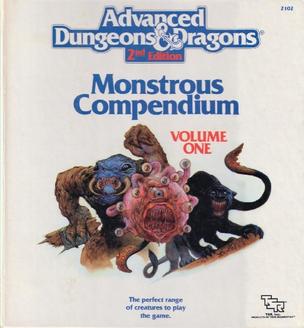
The Monstrous Compendium is a series of accessories for the Advanced Dungeons & Dragons fantasy role-playing game released from 1989 to 1998. The title was then used for a series of 5th Edition Dungeons & Dragons supplements released on D&D Beyond.
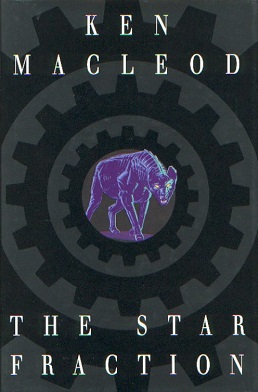
The Star Fraction is a science fiction novel by Scottish writer Ken MacLeod, his first, published in 1995. The major themes are radical political thinking, a functional anarchist microstate, oppression, and revolution. The action takes place in a balkanized UK, about halfway into the 21st century. The novel was nominated for the Arthur C. Clarke Award in 1996.
Mary Houser Herbert is an American fantasy writer, author of the Dark Horse series and several Dragonlance novels.

The Wizards of Odd is a 1996 English compilation book of humorous short stories by many great writers in the science-fiction/fantasy genre. The stories were compiled by Peter Haining. The book is separated into three sections: Wizards and Wotsits: Stories of Cosmic Absurdity, Swords and Sorcery: Tales of Heroic Fantasy, and Astronauts and Aliens: Space Opera Yarns.
Star Beast is a novel by Will Baker, published by Hodder & Stoughton in 1996.

Land of the Minotaurs is a fantasy novel by American writer Richard A. Knaak, set in the world of Dragonlance, and based on the Dungeons & Dragons role-playing game. It is the fourth novel in the "Lost Histories" series. It was published in paperback in January 1996. It continues the story of Kaz the Minotaur from The Legend of Huma, Kaz the Minotaur, and the short story "Kaz and the Dragon's Children" from The Dragons of Krynn.

Daughter of the Drow is a fantasy novel by Elaine Cunningham, set in the world of the Forgotten Realms, and based on the Dungeons & Dragons role-playing game. It is the first novel in the "Starlight & Shadows" series. It was published in hardcover, August 1995, ISBN 978-0-7869-0165-4; and in paperback, September 1996, ISBN 978-0-7869-0514-0; paperback re-issue, February 2003, ISBN 978-0-7869-2929-0.
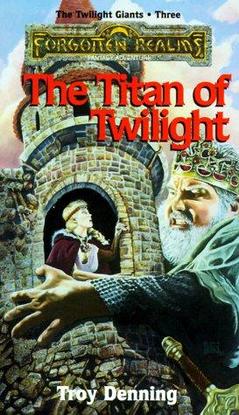
The Titan of Twilight is a fantasy novel by Troy Denning, set in the world of the Forgotten Realms, and based on the Dungeons & Dragons role-playing game. It is the third novel published in "The Twilight Giants" trilogy of novels. It was published in paperback in September 1995, with a paperback re-issue in October 2005.
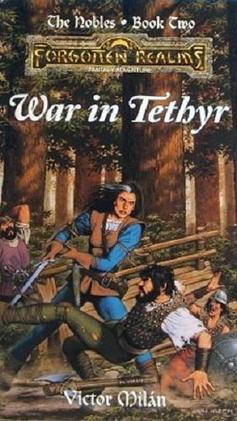
War in Tethyr is a fantasy novel by Victor Milán, set in the world of the Forgotten Realms, and based on the Dungeons & Dragons role-playing game. It is the second novel published in The Nobles series, and was published in paperback in October, 1995.
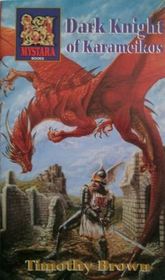
Dark Knight of Karameikos is a fantasy novel by Timothy Brown, set in the world of Mystara, and based on the Dungeons & Dragons role-playing game. It is based on the Mystara setting. It was published in paperback edition in October 1995.
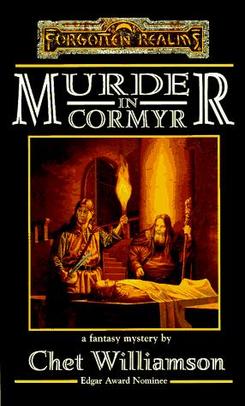
Murder in Cormyr is a fantasy novel by Chet Williamson, set in the world of the Forgotten Realms, and based on the Dungeons & Dragons role-playing game. It is the first novel published in the "Mysteries" series. It was published in hardcover in March 1996, ISBN 978-0-7869-0486-0 and in paperback in July 1998, ISBN 978-0-7869-1173-8.

Cormyr: A Novel is a fantasy novel by Ed Greenwood and Jeff Grubb, set in the world of the Forgotten Realms, and based on the Dungeons & Dragons role-playing game. It is the first novel published in "The Cormyr Saga". It was published in hardcover in July 1996 ISBN 978-0-7869-0503-4, and in paperback in April 1998 ISBN 978-0-7869-0710-6.

For the Crown and the Dragon is a novel by Stephen Hunt published by Green Nebula in 1994.
Summerhill Hounds is a novel by Robert King published by TSR in 1995.

No Blood Spilled is a novel by Les Daniels published by TOR in 1991, and by Raven in 1996.
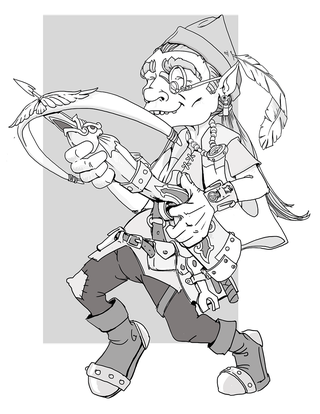
In the Dungeons & Dragons fantasy role-playing game, gnomes are one of the core races available for play as player characters. Some speculate that they are closely related to dwarves; however, gnomes are smaller and more tolerant of other races, nature, and magic. Depending on the setting and subrace, they are often skilled with illusion magic or engineering. Gnomes are small humanoids, standing 3–3.5 feet (91–107 cm) tall.














